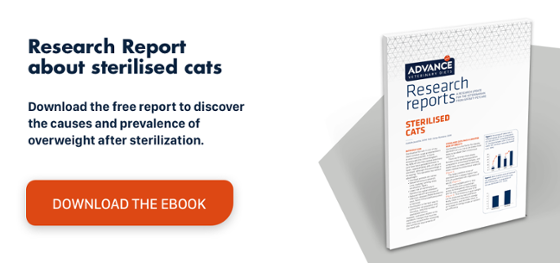Postoperative period after sterilisation in cats. Postsurgical analgesia
Postoperative pain may prove even harder to identify since the signs that are indicative of pain are intermingled with the physiological changes that occur after a surgical procedure.
Multiple scales have been developed to diagnose pain in cats, but many of them are based on the premise that the cat was already suffering pain beforehand, which is counterintuitive to our specific reason for using analgesics: to prevent the cat experiencing pain in the postsurgical period. As we know that the presence of pain is associated with worse results, its correct preventive treatment depending on the procedure to be performed is the correct approach to avoiding postsurgical pain. Furthermore, it is important to be aware that postsurgical pain is also related to a number of risk factors. For example, in can be harder to identify and manage pain in obese cats.
What techniques and medicines are at our disposal in order to achieve our goal?
Pharmacologically, several families of drugs are suitable for cats: opioids, nonsteroidal anti-inflammatory drugs (NSAIDs) and alpha-2 agonists.
Opioids are a type of drug that binds to specific receptors in the central and peripheral nervous systems and even in joint capsules in some species. By binding to receptors, opioids prevent the release of excitatory neurotransmitters, decreasing the pain derived from a stimulus but without affecting nerve conduction or motor function. They are powerful painkillers so they are often used in postsurgical analgesia. They have significant side effects (bradycardia, respiratory depression, decreased gastrointestinal motility, vomiting and nausea), which conditions their maximum dose.
The use of opioids has constantly evolved, and new drugs and routes of administration have emerged, such as transmucosal buprenorphine1, producing a faster, more predictable effect compared with other more traditional preparations. In addition, opioids can be administered locally using locoregional techniques, either alone or in combination with anaesthetics. This means they are ideal for epidural administration.
Other drugs, such as NSAIDs, must be used with care2, as cats are especially susceptible to their toxicity. However, they are safe when used correctly and have been administered in conjunction with opioids to decrease the dosage of the latter and prevent the side effects associated with postsurgical analgesia.
The use of alpha-2 agonists is in decline, given the cardiovascular effects of these drugs.
In addition to the drugs listed above, we need to consider the possible use of adjuvant medication (anxiolytics, such as ketamine3) and local anaesthetic block techniques (depending on the surgical approach and operation) to achieve better control of pain when providng postoperative analgesia.

